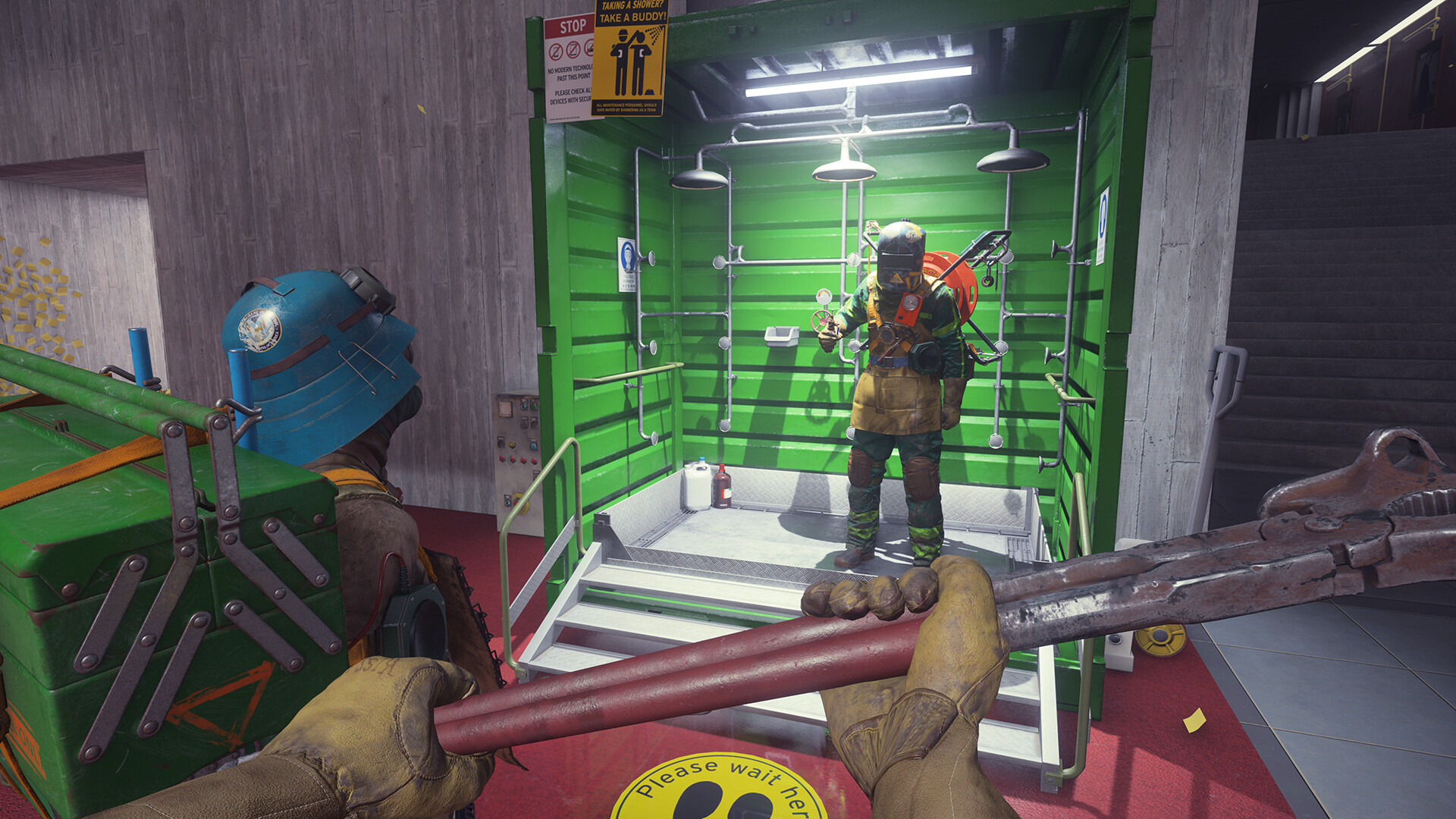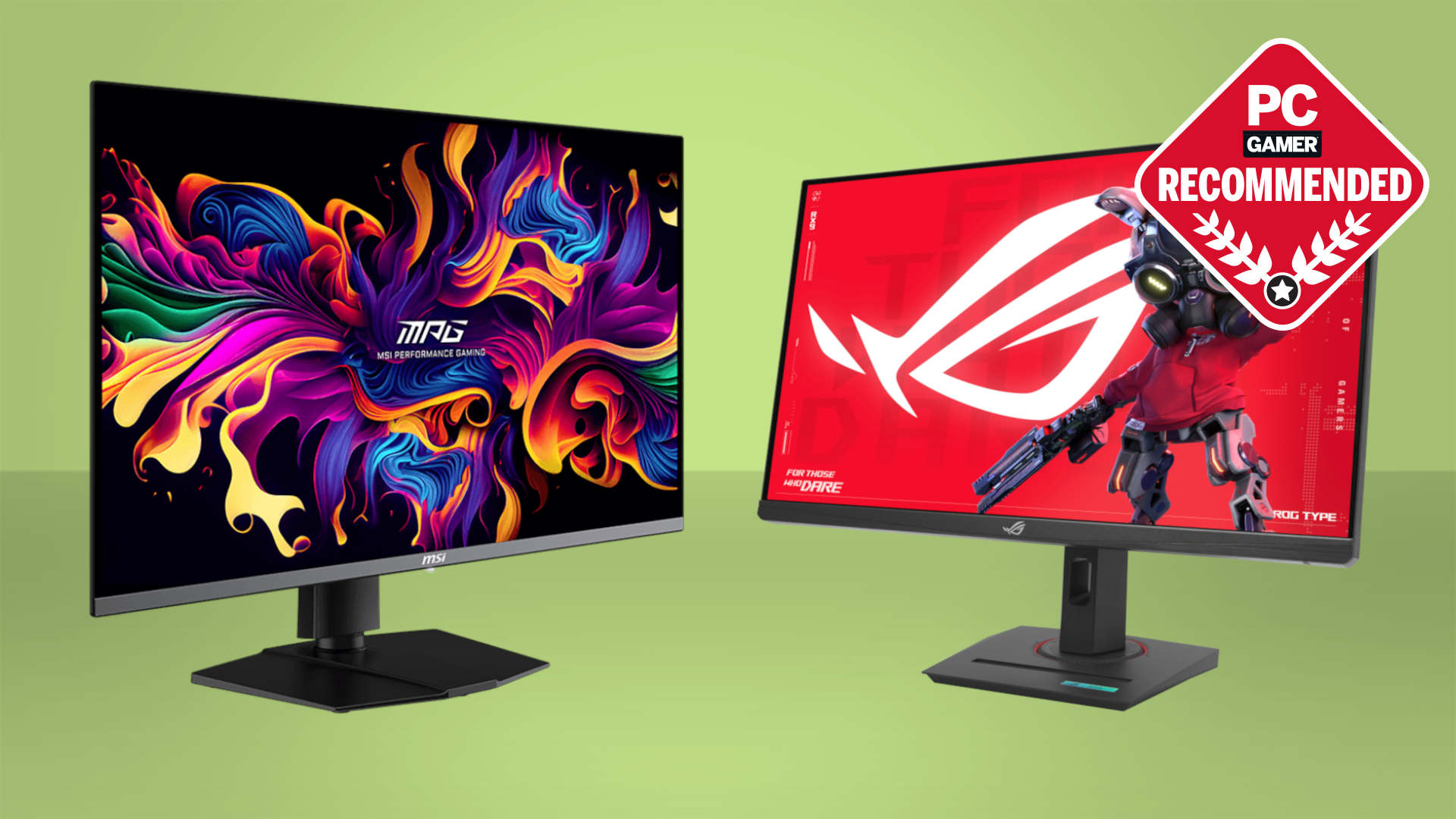Our Verdict
FBC: Firebreak's madcap mission conceits are delightfully silly, but balancing issues and limited replay value hinder the fun.
PC Gamer's got your back
FBC: Firebreak is one of the messiest games I've ever played, but this is in large part because it is a game about mess. Creating it, cleaning it up, getting caked up to your neck in it—your character is constantly covered in water or sticky notes or quivering pink goo that could've sluiced straight out of a British gameshow in the nineties. If Noel Edmonds ever made a first-person shooter, it would probably look like Firebreak.
What is it? A daft cooperative shooter where you fix the world's weirdest maintenance issues against hordes of possessed enemies.
Release date June 17, 2025
Expect to pay $40/£33
Developer Remedy Entertainment
Publisher Remedy Entertainment
Reviewed on AMD Ryzen 5 3600, Nvidia 2080 Super, 32 GB RAM, Windows 10
Steam Deck Verified
Link Official site
But Firebreak is also deliberately messy on a mechanical level. It's all about figuring out how things work through trial and (often fatal) error, a game of bungling your way through crowds of enemies hoping you don't accidentally fry or torch or explode your friends in the process. At its best, this leads to fun eureka moments and silly, chaotic firefights. But the fuzzy edges can also be a source of frustration, a problem exacerbated by some serious balancing issues.
For those unaware, FBC: Firebreak is a cooperative spinoff of Remedy's excellent 2019 action game Control. It's still set in The Oldest House, a foreboding, brutalist interdimensional nexus that serves as the headquarters of the Federal Bureau of Control—essentially the FBI for weird shit. The Oldest House is a a bit like if Twin Peaks' Red Room had an administration wing, a place where thick concrete pillars and atomically aligned office cubicles collide with nameless, shapeless anomalies that would give Euclid a migraine and will give you a vivisection without ever noticing your existence.
Instead of playing as the director of the FBC, empowered with anomalous magic in slick third-person combat, you play as the FBC's 'Firebreakers', disposable janitors clad in rubber suits and acoustic foam panel armour tasked with fixing The Oldest House's reality-defying maintenance issues. Between you and your objective stands an army of the FBC's own employees, possessed and contorted by a hostile force known as the Hiss.
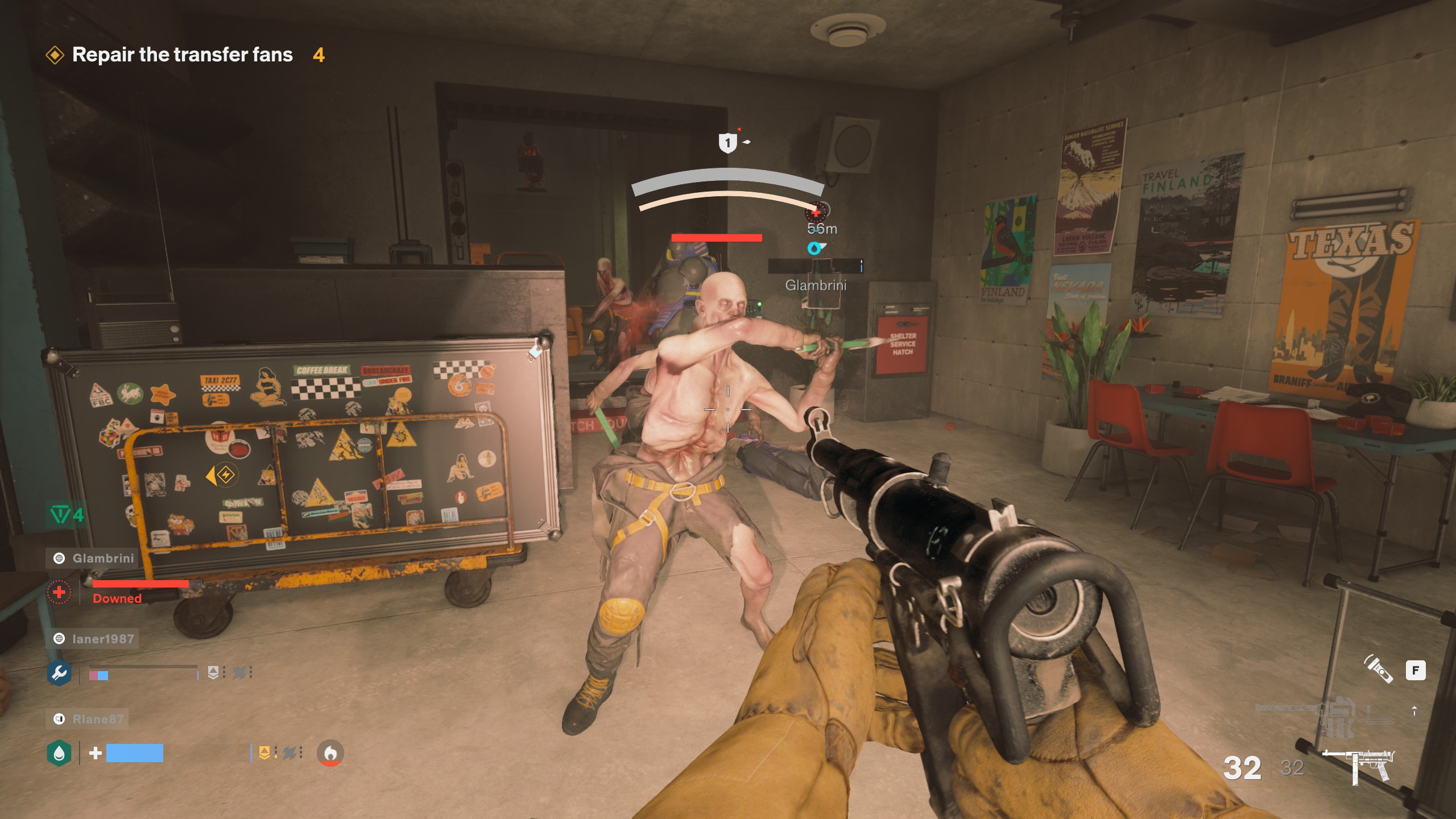
Firebreak, it should be noted, doesn't really explain any of this. It assumes you're familiar with Control and doesn't have much in the way of a tutorial, cramming a hasty explanation into a loading-screen letter which in the age of SSDs you won't have time to read. If you're coming to Firebreak without having played Control (like my poor, long-suffering partner) prepare to be tremendously confused.
Structurally, Firebreak takes the form of five specific "jobs", linear-ish levels where you must fight through the Hiss to complete a sequence of specific objectives. These range from the merely strange, like fixing the Oldest House's air conditioning to stop its incandescently angry furnace from burning the place down; to the downright ridiculous, like clearing a vast infestation of pink goo off the building's electricity turbines, blasting them with your guns in great showers of cosmic blancmange. The result sits halfway between the frantic FPS gauntlets of Left4Dead, and a more open-ended, exploration-based experience like REPO.
More than anything else, it's the ideas that drive each of these jobs that make Firebreak stand out. For starters, they're endearingly bizarre, but many of them also come bundled with mission-specific mechanics. Paper Chase, arguably the most distinctive of the bunch, sees you sweeping up an enormous carpet of sticky notes. But if you run across the carpet, or get attacked by sticky-note creatures called shufflers who flutter around later in the level, you'll begin to get covered in sticky notes yourself. These slowly amass on the screen, obscuring your vision until you disintegrate into a pile of yellow paper.
Keep up to date with the most important stories and the best deals, as picked by the PC Gamer team.
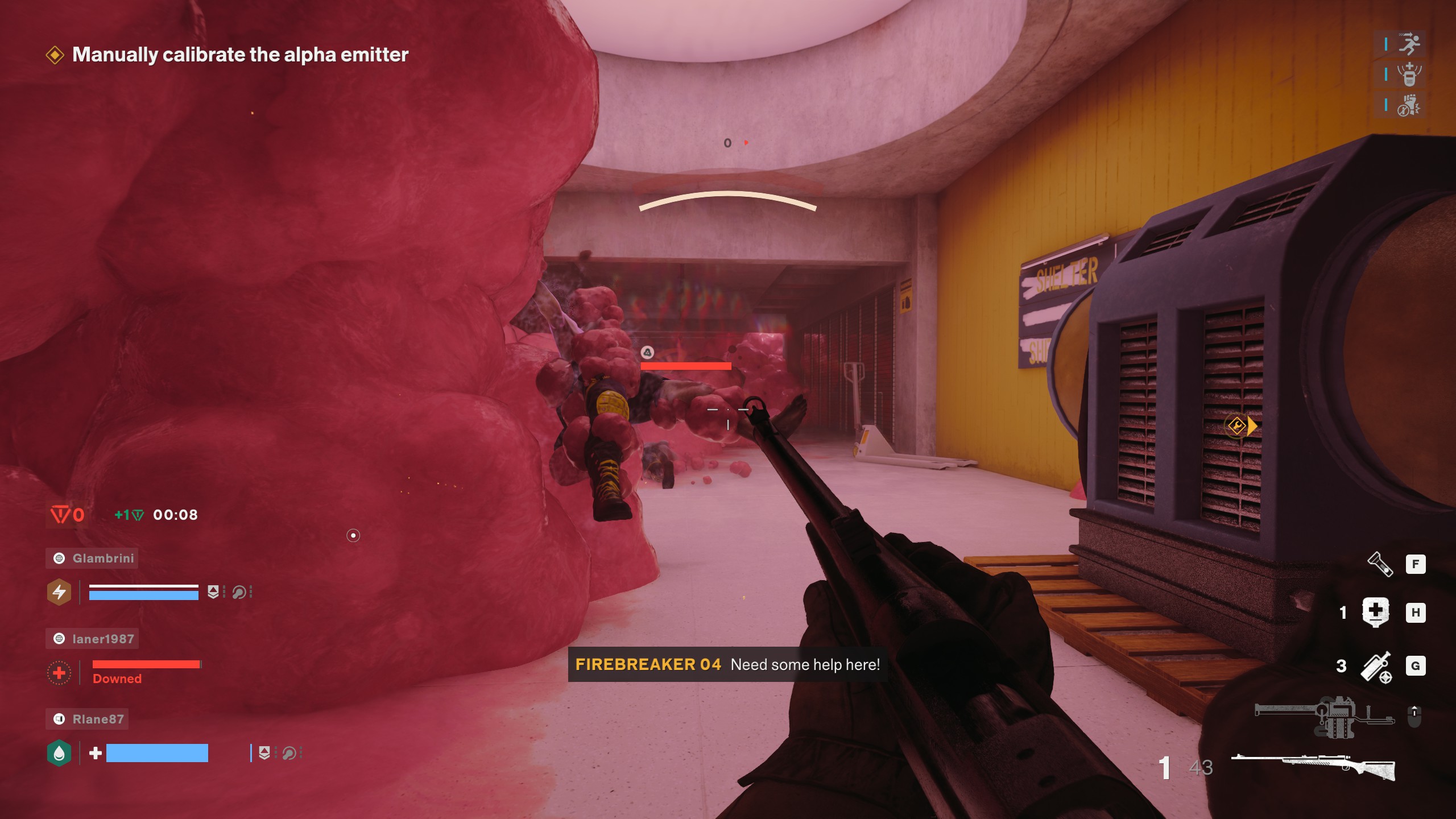
I will say not every job is a winner, though. The fifth job involves tossing flame-spewing heaters into juddering ice anomalies. The theme of the job is neat, taking you beyond The Oldest House's brutalist architecture into a cardboard cutout skiing resort complete with a functioning (and hungry) ski-lift. But the anomalies aren't all that interesting, the heaters are fiddly to move and activate, and the whole thing's a bit of an anticlimax.
Still, for the most part, I like the jobs conceptually. Firebreak folds these mission-specific mechanics into a more general emphasis on systemic interaction. Elements like fire, water, and electricity all play a role in Firebreak's combat, and you can outfit your team with various equipment known as "kits" to exploit them. The splash kit furnishes the player with a crank-powered super-soaker that splashes the environment and enemies in water. The Hiss take more damage from bullets when wet, but this also makes them vulnerable to electrical attacks. So if another player wields the jump kit, they can zap entire groups of soggy enemies, stunning them for a short while.
Since discovery is a big part of Firebreak, I don't want to delve too deeply into how all the different ideas interplay. But I will say there is a decent amount to discover relative to the game's scope. From objects in the environment that can be used to your advantage, to unlockable deployables that affect enemies in different ways, almost every run brought some minor revelation that altered our approach to combat.

I am less convinced by Firebreak as a straight shooter, however. Combat has a slower, softer feel than Control's clinical, highly kinetic firefights. This is partly by design—you're a goofball wielding a gun rather than an accidental superhero. But the net result is that the Hiss are less fun to fight overall. Fighting those floating chair lads was a blast when you could lob a massive lump of concrete at them. But they're more annoying when trying to pick them out of the air with guns.
The quality of the combat also depends heavily on which weapon you use. The grease gun-looking SMG, which is kinda the default weapon, is absolutely awful. But the sawed-off shotgun is pretty tasty, and the revolver isn't bad either. The best weapon, though, is the hunting rifle which compensates for an agonisingly slow reload time with a wicked lethality when you land a headshot. Still, if it's raw cooperative combat you're after, I would much sooner recommend Helldivers 2 or Darktide, both of which boast a level of refinement that Firebreak doesn't quite match.
Nonetheless, the surrounding ideas compensate for the weaker combat, and when all its elements are in equilibrium, Firebreak's a pretty good time. But there were extended periods playing Firebreak where I didn't enjoy it at all, mainly because it has some of the wildest balance swings I've encountered for a long time.

The reason for this is a little tricky to explain. Firebreak has multiple difficulty levels, with the baseline for this review being 'normal'. But levels are also partitioned into three different areas in a system known as 'clearance', which you unlock by playing through rounds in the previous areas first, essentially playing a smaller chunk of the level before running back to the exit elevator.
These areas also increase sequentially in challenge, regardless of what difficulty you play on. But these difficulty hikes are highly inconsistent. Generally speaking, the first area of every level is almost laughably easy on standard difficulty. The second area, by comparison, ranges from "reasonably challenging" to "virtually impossible" depending on which area you're playing.
The most dramatic spike occurs in Paper Chase, which goes from a leisurely cleanup operation to backing you into a corner against an unceasing torrent of Hiss the moment you open the door to the second area. The shufflers are part of the problem, because they can kill you far too quickly, and also drop more sticky notes when they die (unless you wet them first) But the real issue is that enemies simply don't stop coming, resulting in a grinding, attritional stalemate.
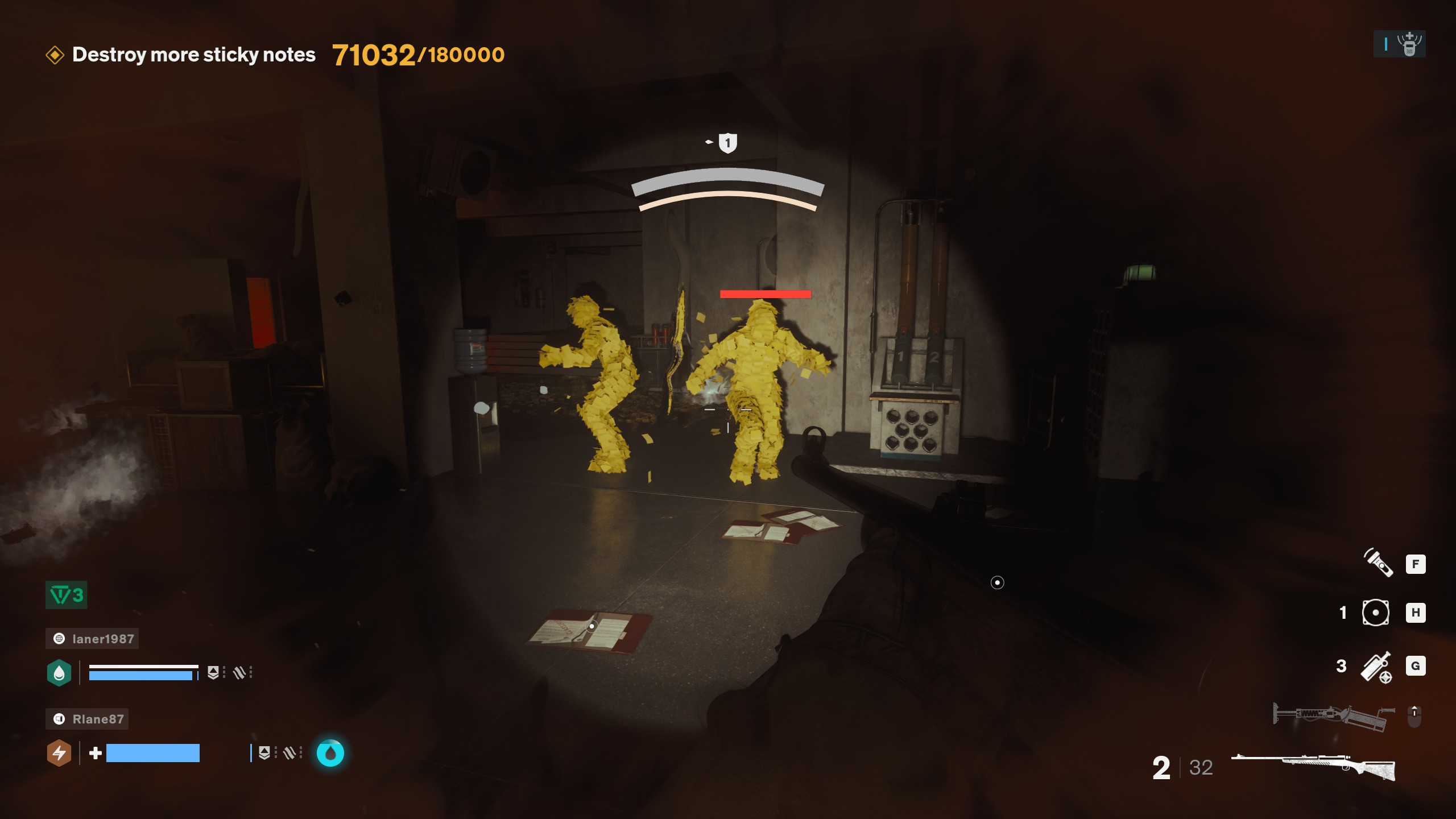
As for Clearence level 3, again, the difficulty is all over the place. The climactic encounter against the furnace in Hot Fix is perfectly judged. But the finale of Frequency Shift (the pink goo level) is not just hard, it's downright broken. See, the pink goo regrows at a faster rate as you progress through each area, obscuring more of the level as it goes on. This is a cool idea, and I love how the mood of the goo shifts from absurd to surprisingly menacing. Yet once we reached the finale, it began regrowing almost instantaneously, completely blocking passages in a way that made it incredibly difficult to bypass.
In short, Firebreak needs a considerable tune-up to make that escalation more organic and gradual, and ensure the game better knows when to take the foot off the gas. But the clearance system also creates another issue, ironically one it seems designed to solve. See, Firebreak's jobs are small, even compared to adjacent games like Left4Dead and Darktide. Played right through, they might take half an hour to see end to end. Since Clearance requires you to play through chunks of the level multiple times, though, overall it takes longer to reach that climactic encounter.
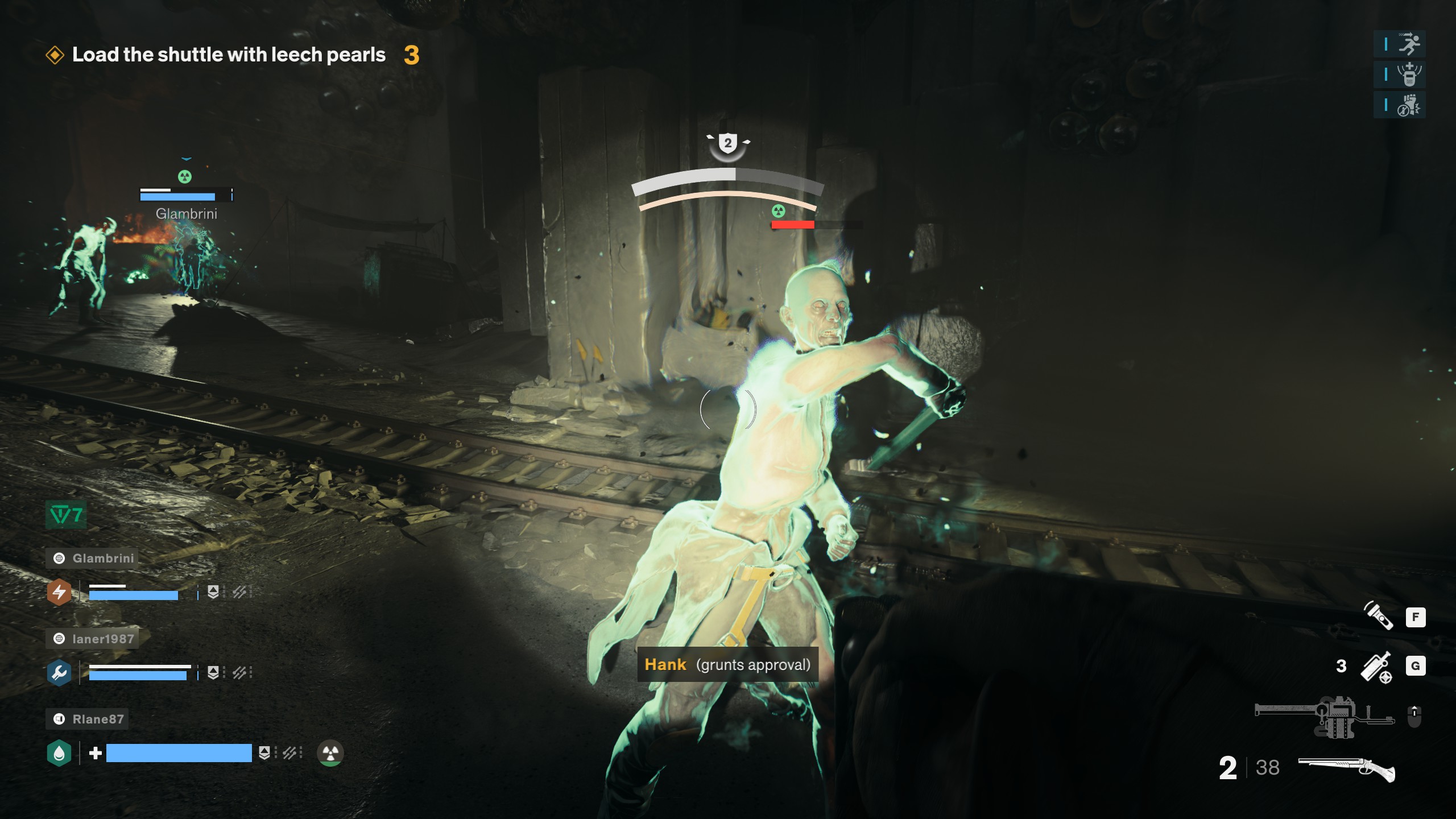
The intent, at least as far as I can see, is to give the jobs greater replay value. But it ultimately ends up giving them less. See, while Darktide also had a slender mission roster on launch, I played each of those missions three, maybe four times in full before I began to grow weary of them. By the time you reach the end of a Firebreak mission, however, you've already seen the bulk of it at least twice. So once I'd finished a job, I was kind of done with it, even though I'd spent less time in it than if it was a straight run to the finish line.
The good news is, many of Firebreak's problems are fixable. A thorough balance revision would immediately improve the experience. The clearance problem is harder to solve, but the addition of new levels (which are coming later in the year) will certainly help. In time, I see Firebreak becoming a perfectly decent cooperative shooter. For now though, it isn't quite a job well done.
FBC: Firebreak's madcap mission conceits are delightfully silly, but balancing issues and limited replay value hinder the fun.
Rick has been fascinated by PC gaming since he was seven years old, when he used to sneak into his dad's home office for covert sessions of Doom. He grew up on a diet of similarly unsuitable games, with favourites including Quake, Thief, Half-Life and Deus Ex. Between 2013 and 2022, Rick was games editor of Custom PC magazine and associated website bit-tech.net. But he's always kept one foot in freelance games journalism, writing for publications like Edge, Eurogamer, the Guardian and, naturally, PC Gamer. While he'll play anything that can be controlled with a keyboard and mouse, he has a particular passion for first-person shooters and immersive sims.
You must confirm your public display name before commenting
Please logout and then login again, you will then be prompted to enter your display name.
